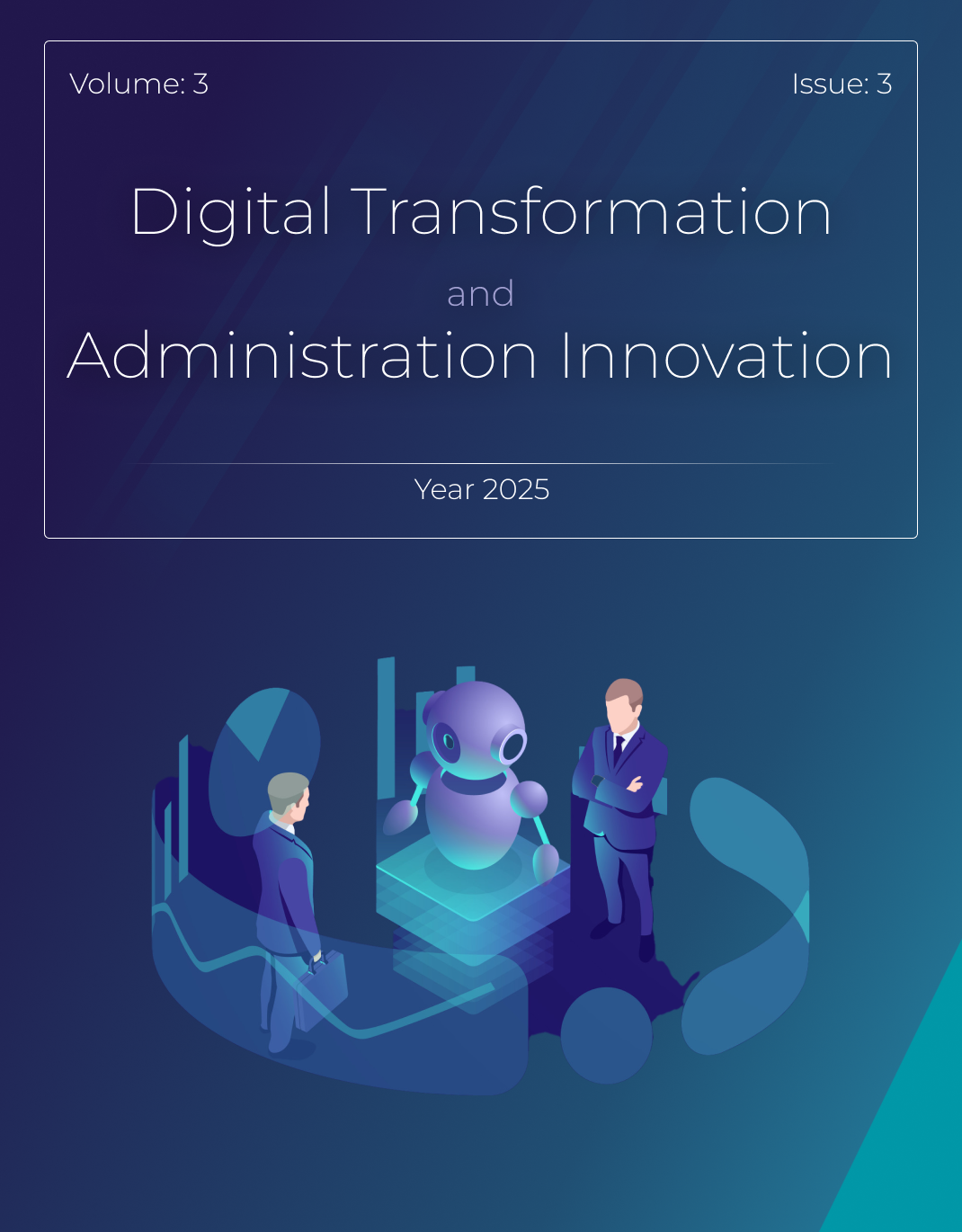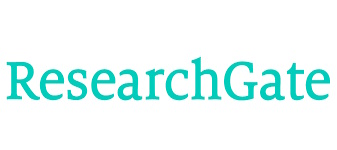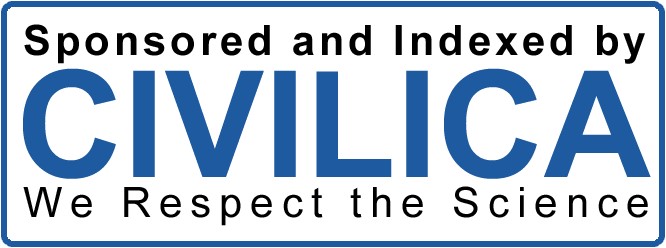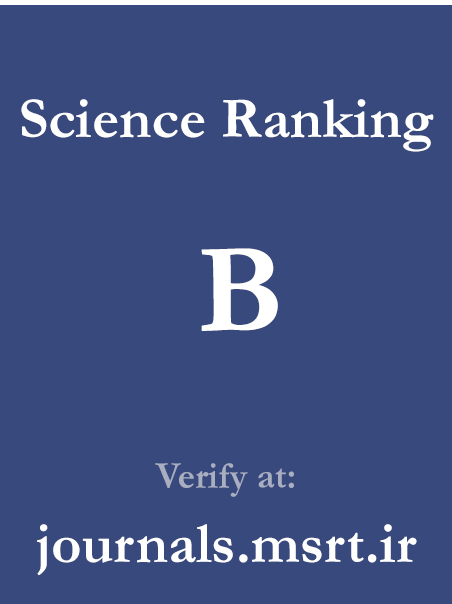Framework for Managers' Engagement Enthusiasm with Smart Technologies in the Platform Government
Keywords:
Technology engagement, platform government, smart technologies.Abstract
The present study was conducted with the aim of developing a framework for managers’ engagement enthusiasm with smart technologies in the context of a platform government. This research is applied in nature, employs a qualitative data collection method, and utilizes a thematic analysis approach as its research execution method. Using the three-step thematic analysis method, the study offers a conceptual framework for understanding the enthusiasm of managerial engagement with smart technologies in the platform government. A total of 15 interviews were conducted, and through analysis and coding of related texts, the descriptive codes derived from the first phase were grouped into related categories. Based on the subject literature and theoretical sensitivity, a total of 231 open/descriptive codes, 159 basic themes, 22 organizing themes, and 8 overarching themes were identified. In the subsequent sections, the framework for managerial engagement enthusiasm with technology in the platform government was presented as a thematic network. The proposed framework in this study identifies the various dimensions that governments must consider in their activities and programs to realize and institutionalize a smart government. The research attempts to provide a comprehensive framework by identifying key dimensions that can serve as the basis for government planning and policymaking.
Downloads
References
Barz, N., Benick, M., Dörrenbächer-Ulrich, L., & Perels, F. (2024). Students' acceptance of e-learning: Extending the technology acceptance model with self-regulated learning and affinity for technology. Discover Education, 3(1), 114. https://doi.org/10.1007/s44217-024-00195-7
Chang, M., & Cheung, W. (2001). Determinants of the intention to use Internet. Information and Management, 39(1), 1-14. https://doi.org/10.1016/S0378-7206(01)00075-1
Fadaei, M. J., Attaradi, M. R., & Javan Jafari Bojnordi, A. (2023). Transition from Modern Government to Platform Government: A Study Based on Interpretive Research and the Teachings of the Sharing Economy. Quarterly Journal of Public Management Perspectives, 14(3), 183-210. https://www.sciencedirect.com/
Franke, T., Attig, C., & Wessel, D. (2019). A personal resource for technology interaction: development and validation of the affinity for technology interaction (ATI) scale. International Journal of Human-Computer Interaction, 35(6), 456-467. https://doi.org/10.1080/10447318.2018.1456150
ghohari. (2017). E-Government Future in the era of 4th Industrial Revolution. International Information Institute (Tokyo). Information, 20(5B), 3539-3547. https://search.proquest.com
Gil-Garcia, J. R. (2012). Towards a smart State? Inter-agency collaboration, information integration, and beyond. Information Polity, 17(3, 4), 269-280. https://doi.org/10.3233/IP-2012-000287
Gil-Garcia, J. R., & Aldama-Nalda, A. (2013). Smart city initiatives and the policy context: the case of the rapid business opening office in Mexico City. Proceedings of the 7th International Conference on Theory and Practice of Electronic Governance, https://doi.org/10.1145/2591888.2591931
Gil-Garcia, J. R., Helbig, N., & Ojo, A. (2014). Being smart: Emerging technologies and innovation in the public sector. Government Information Quarterly, 31, I1-I8. https://doi.org/10.1016/j.giq.2014.09.001
Gil-Garcia, J. R., & Luna-Reyes, L. F. (2006). Integrating conceptual approaches to e-government. In Encyclopedia of e-commerce, egovernment and mobile commerce (pp. 636-643). https://doi.org/10.4018/978-1-59140-799-7.ch102
Gil-Garcia, J. R., Pardo, T. A., & Nam, T. (2015). What makes a city smart? Identifying core components and proposing an integrative and comprehensive conceptualization. Information PolityVL - 20(1), 61-87. https://doi.org/10.3233/IP-150354
Gil-Garcia, J. R., Zhang, J., & Puron-Cid, G. (2016). Conceptualizing smartness in government: An integrative and multi-dimensional view. Government Information Quarterly. https://doi.org/10.1016/j.giq.2016.03.002
Hoshino, H., & Zhong, N. (2007). Dynamic Hybrid Type Mining in an Intelligent e-Government Model. Proceedings of the 2007 IEEE/WIC/ACM International Conferences on Web Intelligence and Intelligent Agent Technology-Workshops, https://doi.org/10.1109/WI-IATW.2007.119
HuaxiongJiang, StanGeertman, & PatrickWitte. (2022). The contextualization of smart city technologies: An international comparison. Journal of Urban Management. https://www.sciencedirect.com
Jung, H., Wiberg, M., Malakhatka, E., & Novakazi, F. (2025). Human-Technology Interaction: Design and Implementation of Interactive Systems. In Human-Technology Interaction: Interdisciplinary Approaches and Perspectives (pp. 3-22). https://doi.org/10.1007/978-3-031-78357-9_1
Kim, S., Andersen, K. N., & Lee, J. (2022). Platform government in the era of smart technology. Public Administration Review, 82(2), 362-368. https://doi.org/10.1111/puar.13422
Moghimi, A. (2015). Epistemology of Futures Studies in Theoretical Approaches to Urban Planning, Architecture and the Construction Industry. Urban Management, 14(38), 75-104. https://sid.ir/paper/92138/fa
Scholl, H. J., & Scholl, M. C. (2014). Smart governance: A road map for research and practice. iConference 2014 Proceedings, http:// dx. doi. org/ 10.9776/14060
Zarandi, S., & Asadbak, M. (2023). Analyzing the Fundamental Reasons for Creating Platform Government in Europe and America. 1st International Conference on Management, Economics, Entrepreneurship, and Industrial Engineering, https://civilica.com/doc/1719266
Downloads
Published
Submitted
Revised
Accepted
Issue
Section
License
Copyright (c) 2025 Mohammad Mehdi Jafarian (Author); Habib Roodsaz (Corresponding author); Mir Ali Seyyed Naghavi, Alireza Koushkie Jahromi (Author)

This work is licensed under a Creative Commons Attribution-NonCommercial 4.0 International License.







